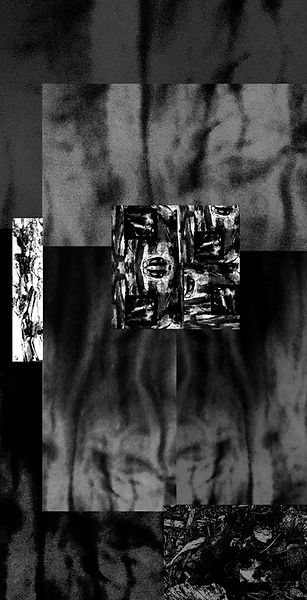Tony Brinkley
Icons of War
Poems Without Words
PUTIN'S WAR - THE NEW STALINGRAD
The tradition of the oppressed teaches us that the 'state of emergency' in which we are living is not the exception but the rule. . . The current amazement that the things we are experiencing are 'still' possible in the twentieth century is not philosophical. The amazement is not the beginning of knowledge - unless it is the knowledge that the view of history which gives rise to it is untenable.
—Walter Benjamin
So I am still and I am silent, because if I open my mouth, I may never stop screaming.
-- Franz Kafka
In many ways, since the beginning of Putin's War, Ukraine has become the new Stalingrad - not only because Stalin's afterlife hovers over all of the former Soviet Union, but because the Battle of Stalingrad was the defining achievement of Stalin's rule and Putin's War will be a determining episode in the survival and demise of the Stalinist catastrophe.
I live in a distant and very protected rural space but when Putin's War began, the look of things and their life seemed to change. As I photographed the commonplace around me—as I edited the photographs with the limited technology that a camera phone offers—familiar objects began to reappear as icons of the war. Subsequent events in Sudan, Lebanon, Israel and Gaza have only intensified this impression. The Russian priest (and martyr) Pavel Florensky writes that an icon offers an appearance of the energy for which it is the leading wave. As the wave floods the mind, the appearance dissolves but the energy remains palpable as alters inner life. Anything can become an icon when it participates in this transformation.
I was already aware of this phenomenon from Wordsworthian poetry where memories from childhood become icons of imagination and intimations of mortality and immortality. A similar phenomenon occurs in Claude Lanzmann's Shoah where voices of memories turn the landscapes Lanzmann films into icons of the Holocaust. When you hear rifle fire while walking in the woods, it can become an icon of war and its recurring traumas. A ruined chimney in a field can become an icon after Birkenau. When you see into the life of things, what you see has changed. Things turn into imprisoned souls.
Simone Weil interprets reified lives as artifacts of force:
To define force — it is that x that turns anybody who is subjected to it into a thing. Exercised to the limit, it turns man into a thing in the most literal sense: it makes a corpse out of him. Somebody was here, and the next minute there is nobody here at all.
This spectacle induces terror, "the force that does not kill, i.e., that does not kill just yet:
From its first property (the ability to turn a human being into a thing by the simple method of killing him) flows another [force], quite prodigious too in its own way, the ability to turn a human being into a thing while he is still alive. He is alive; he has a soul; and yet — he is a thing. An extra- ordinary entity this — a thing that has a soul. And as for the soul, what an extraordinary house it finds itself in! Who can say what it costs it, moment by moment, to accommodate itself to this residence, how much writhing and bending, folding and pleating are required of it? It was not made to live inside a thing; if it does so, under pressure of necessity, there is not a single element of its nature to which violence is not done.
And Putin's War: it is only one of many catastrophes, many unnoticed - and then you notice. The desolations of Sudan, Gaza and October 7 devastate the commonplace. This world is not this world. As Aleksei Navalny said not long before his murder: "You start to realize the degree of horror."
And icons: Through icons, perhaps, a violated life can be liberated. Can icons turn things into blessings (however terrified, however cathartic) by offering appearances that become inner life? The head of a burned match turns into a human face, a pile of burned matches into an image of desolation. Landscapes become battlefields. Souls appear in photographs of ashes. You begin to see what you are able but unready to find. In my experience icons bring seeing to a standstill - something that you face. Poems without words: if you listen, their sounds are shadows you overhear.













